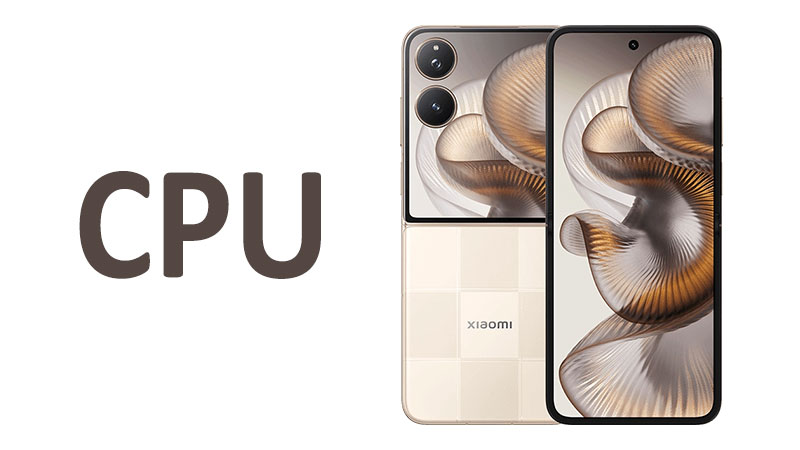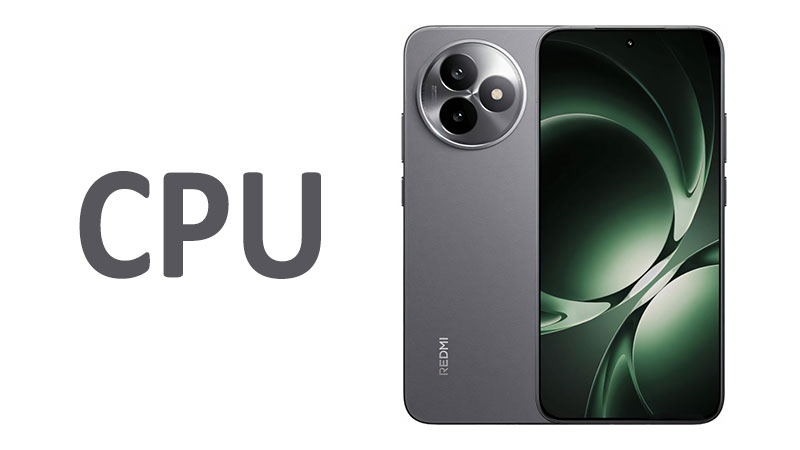The Apple iPhone 15 Plus processor review begins now. This component is the brain of the device. It determines everything from app speed to battery longevity. The processor is arguably the single most important part of any smartphone. Understanding its specifications is crucial for any potential buyer. We will conduct a thorough examination of the A16 Bionic chip. This article details the CPU, GPU, and overall performance.
The Core of the Experience: Apple A16 Bionic
The Apple iPhone 15 Plus processor is the powerful A16 Bionic chipset. Apple first introduced this chip in its previous generation Pro models. This strategic choice gives the 15 Plus massive performance capabilities. It ensures the device will remain fast for many years. The A16 Bionic is manufactured using an advanced 4-nanometer (nm) process. This smaller process size is a key factor. It allows Apple to fit billions of transistors into a tiny space.
The 4 nm architecture is highly significant. It leads to improved power efficiency. It also boosts overall performance density. This means the chip uses less energy for the same amount of work. Better efficiency directly translates to longer battery life. The A16 Bionic represents a peak in mobile silicon engineering. It sets a high standard for the entire industry.
Anatomy of the Apple A16 Bionic Chipset
The A16 Bionic is a masterpiece of integrated design. It is not just a CPU or a GPU. It combines several specialized components onto one piece of silicon. These components work together seamlessly. They handle diverse tasks from gaming to advanced photography. The entire system is built for speed and efficiency. This design ensures that every task is handled by the optimal resource.
The main components include the Central Processing Unit (CPU). It also includes the Graphics Processing Unit (GPU). Furthermore, it features the advanced Neural Engine. There is also a powerful Image Signal Processor (ISP). The A16 Bionic has an estimated 16 billion transistors. This immense density provides its computational power. This transistor count is necessary for modern mobile performance.
Hexa-core CPU: Everest and Sawtooth Cores
The heart of the A16 Bionic is its Hexa-core CPU. “Hexa-core” simply means it has six independent processing cores. Apple uses a hybrid core design for this chip. This design balances high speed with remarkable efficiency. This architecture is key to managing diverse workloads. It ensures the iPhone 15 Plus operates smoothly under all conditions.
The CPU is divided into two distinct clusters. There are two high-performance cores. These are codenamed “Everest.” There are also four high-efficiency cores. These are codenamed “Sawtooth.” This is a classic big.LITTLE style arrangement. It allows the chip to intelligently scale its power use.
The Power of Everest Performance Cores
The two Everest performance cores are clocked at 3.46 GHz. These cores are designed to handle demanding, single-threaded tasks. They provide maximum speed when needed. This includes launching apps or rendering complex web pages. They are activated for intensive activities like video editing or competitive gaming. These cores are responsible for the chip’s industry-leading single-core benchmark scores. They deliver instantaneous responsiveness to user inputs. They are the primary engine for raw speed.
The Efficiency of Sawtooth Cores
The four Sawtooth efficiency cores operate at 2.02 GHz. Their primary role is to handle background processes. They also manage lighter, continuous workloads. This includes tasks like checking email or streaming music. By using these cores, the chip saves significant battery power. These four cores handle the majority of daily smartphone operations. They allow the iPhone 15 Plus to maintain excellent endurance. The core scheduler intelligently shifts tasks between the two types of cores. This ensures maximum efficiency at all times.
5-Core Graphics: A Powerhouse for Gaming
The graphics capability of the iPhone 15 Plus is formidable. It relies on a custom-designed Apple GPU. This particular GPU configuration features five cores. This 5-core graphics setup provides a massive boost. It handles all visual rendering tasks. This includes the smooth operation of the iOS interface. It also powers demanding 3D games and augmented reality (AR) applications.
Immersive Mobile Gaming
The 5-core GPU is specifically optimized for gaming performance. It delivers high frame rates and detailed textures. Modern mobile games look stunning and run flawlessly. The GPU works closely with Apple’s Metal API. This combination minimizes overhead. It maximizes the graphical throughput. Users experience less lag and more consistent performance. This makes the iPhone 15 Plus a fantastic choice for mobile gamers. The sustained performance under load is particularly impressive. The graphics processing is reliable even during long gaming sessions.
Advanced Graphics Features
The A16 GPU architecture supports advanced rendering techniques. This includes complex lighting and shadow calculations. It also handles sophisticated particle effects. The chip takes significant steps toward hardware-accelerated ray tracing. While full-scale ray tracing is resource-intensive, the A16 lays important groundwork. This feature allows for more realistic light interactions in supported apps. The increased GPU bandwidth handles the higher data volume required for these graphics. The entire system is engineered for future-proofing. It is ready for the next generation of mobile visuals.
A16 Bionic: Benchmarking Against the Best
The A16 Bionic maintains Apple’s strong lead in mobile processing. Its performance relative to competitors is a frequent topic of discussion. It is essential to compare it to both previous models and current rivals. This helps quantify the benefits for consumers. The architectural and fabrication improvements are clear in the benchmarks.
Specialized Comparison: A16 Bionic vs. A15 Bionic
The A16 Bionic is a generational improvement over the A15 Bionic. The A15 Bionic powers the standard iPhone 14 models. The shift from a 5 nm process to a 4 nm process is key. This refinement provides better thermal performance and efficiency. Apple claims an approximately 10% increase in CPU performance. The memory bandwidth also sees a significant boost. This allows the CPU and GPU to access data faster. This results in quicker loading times and smoother multitasking. While the generational jump is solid, the biggest gain is in efficiency. The iPhone 15 Plus runs cooler than its predecessor during heavy use. It also boasts a better overall battery life.
Specialized Comparison: A16 Bionic vs. Key Competitors
The A16 Bionic often dominates benchmark charts, especially in single-core tests. It typically outperforms contemporary high-end Android chips. These include the Snapdragon 8 Gen 2 from Qualcomm. The A16’s single-core speed provides unparalleled responsiveness. This affects basic daily tasks the most. In multi-core and graphics tests, the competition closes the gap. However, the A16 maintains an edge in sustained performance. This means the A16 Bionic does not throttle performance as quickly. It can maintain peak speed for longer periods of time. This translates to better real-world usage in extended gaming or camera use. Apple’s tight integration of hardware and software is the real advantage.
The Invisible Power: Neural Engine Capabilities
The A16 Bionic integrates a powerful Neural Engine. This is a dedicated processor for machine learning (ML) tasks. It is separate from the CPU and GPU. The Neural Engine is crucial for many modern smartphone features. It handles on-device artificial intelligence (AI) functions.
AI and Computational Photography
The A16 Bionic features a 16-core Neural Engine. This engine is capable of performing nearly 17 trillion operations per second. This massive processing power enables advanced computational photography. Features like Photonic Engine rely on this capability. It enhances image quality in challenging lighting conditions. The Neural Engine performs image analysis and adjustments in real-time. It is also essential for features like deep fusion and semantic rendering. These processes refine specific parts of a photograph.
System-Wide AI Acceleration
The Neural Engine accelerates many daily tasks. It powers Siri’s responsiveness and natural language processing. It is also used for Face ID authentication. On-device processing ensures user privacy. Tasks are handled locally rather than being sent to a cloud server. This speed is also leveraged for Live Text functionality. It allows the phone to quickly recognize text in images and videos. The iPhone 15 Plus experience is powered by this hidden computational strength.
Evaluating the Pros and Cons
Understanding the strengths and weaknesses of the A16 Bionic is vital. This helps set realistic expectations for the iPhone 15 Plus. The processor offers a compelling list of advantages. It also has a few inherent limitations worth noting.
Pros of the A16 Bionic Chipset
First, the single-core speed is industry-leading. This guarantees immediate application response times. Second, its power efficiency is outstanding due to the 4 nm process. This directly contributes to excellent battery life on the iPhone 15 Plus. Third, the sustained performance under heavy load is superb. The phone rarely overheats or significantly reduces its speed during intense tasks. Fourth, the 5-core GPU is more than adequate for all current mobile games. It ensures a smooth and high-fidelity gaming experience. Finally, the powerful Neural Engine future-proofs the device. It handles the increasing demands of AI-driven applications.
Cons of the A16 Bionic Chipset
One main drawback is the generational step change. The performance increase over the A15 Bionic is moderate. It is not as revolutionary as some past Apple chip releases. Another point is the intentional segmentation. The 15 Pro models feature an even more powerful A17 Pro chip. The A16 Bionic, while excellent, is not the most powerful chip Apple offers. This differentiation is a strategic decision by Apple. It guides consumers toward the more expensive Pro devices. Users transitioning from an iPhone 14 Pro may notice little performance change.
Thermal Management and Efficiency
A processor’s raw power is only one part of the equation. Its ability to manage heat is equally critical. If a chip gets too hot, it must throttle performance. This reduces speed to protect the hardware. The A16 Bionic excels in thermal management. Its 4 nm fabrication process helps immensely. The denser transistors generate less heat compared to older processes.
The iPhone 15 Plus chassis also aids in heat dissipation. Apple has refined the internal design for better thermal flow. This combination of efficient silicon and effective cooling allows the chip to sustain high speeds. Users can expect minimal performance drop-off. This is true even after extended periods of demanding applications. This thermal efficiency is a key real-world advantage of the A16 Bionic. It ensures a consistently fast user experience.
Memory and Bandwidth Considerations
The A16 Bionic’s performance is also tied to its memory system. The chip supports high-speed LPDDR5 memory. This memory type offers vastly improved data transfer rates. Faster memory bandwidth is crucial for the CPU and GPU. It allows them to access data quickly for processing.
The iPhone 15 Plus utilizes a generous amount of system memory (RAM). This, combined with the A16’s memory controller, boosts multitasking. Apps remain open and responsive in the background for longer. Swapping between demanding applications becomes instantaneous. This technical detail translates directly to a smooth user flow. The entire processing pipeline is designed for minimal latency.
Critical Points for the iPhone 15 Plus Buyer
For a consumer considering the iPhone 15 Plus, the processor is a deciding factor. It directly impacts several key areas. Understanding these impacts helps in making a wise purchasing decision. The A16 Bionic offers a compelling case for the device.
Performance Longevity and Future-Proofing
The A16 Bionic is incredibly powerful today. This power provides significant future-proofing. Apple supports its devices with new iOS updates for many years. The robust A16 Bionic ensures the iPhone 15 Plus can handle these updates. It will run new, more demanding software years down the line. A buyer can be confident in a long lifespan of smooth performance. This longevity adds significant value to the purchase price.
Battery Life Impact
The 4 nm efficiency of the A16 Bionic is optimized for battery life. The four Sawtooth efficiency cores do most of the light lifting. This conserves power dramatically during casual use. The iPhone 15 Plus is known for its excellent battery endurance. This is largely thanks to the A16 Bionic’s balanced design. The chip contributes to the phone lasting a full day or more for most users. This efficiency is perhaps the most practical benefit of the processor.
Overkill for Most Users?
It is important to note the raw power of the A16 Bionic. It is genuinely more than enough for the average user. Most people do not push their smartphones to their absolute limits. Simple tasks like social media and web browsing are handled effortlessly. The chip’s power ensures zero lag and silky-smooth operation. Power users and demanding gamers are the only ones who truly utilize the full potential. However, everyone benefits from the efficiency and responsiveness.
Final Verdict: Performance and Value
The Apple iPhone 15 Plus processor, the A16 Bionic, is an exceptional piece of engineering. It successfully balances raw speed with power efficiency. The Hexa-core CPU, featuring the Everest and Sawtooth cores, handles all tasks with ease. It provides industry-leading single-core performance. The 5-core Apple GPU is a powerhouse for modern mobile gaming. It ensures high frame rates and beautiful graphics.
The chip’s 4 nm architecture is the foundation for its superb battery life. This efficiency is the most significant upgrade over older generations. The integrated Neural Engine guarantees swift AI-driven features. This improves photography and system responsiveness. For the iPhone 15 Plus, the A16 Bionic is not a compromise. It is a high-end chip previously reserved for flagship models.
The iPhone 15 Plus offers superb long-term value. The A16 Bionic ensures years of smooth, powerful operation. Buyers can be assured they are getting a top-tier mobile processor. It stands toe-to-toe with the best chips available. This makes the iPhone 15 Plus an intelligent and high-performing choice.
Frequently Asked Questions
What is the specific chipset model in the iPhone 15 Plus?
The iPhone 15 Plus uses the powerful Apple A16 Bionic chipset. This processor was first introduced in the iPhone 14 Pro models.
Is the A16 Bionic chip faster than the A15 Bionic?
Yes, the A16 Bionic offers a performance increase over the A15 Bionic. The key gain is in power efficiency due to its 4 nm manufacturing process.
How many cores does the CPU in the iPhone 15 Plus have?
The CPU has a Hexa-core design. This includes two high-performance Everest cores and four high-efficiency Sawtooth cores.
What is the primary benefit of the 4 nm process on the A16 Bionic?
The primary benefit is greater power efficiency and increased transistor density. This leads to better battery life and sustained performance.
Is the GPU in the iPhone 15 Plus the same as the Pro models?
The iPhone 15 Plus features the Apple GPU with 5-core graphics. This configuration delivers excellent performance for all gaming and AR needs.



